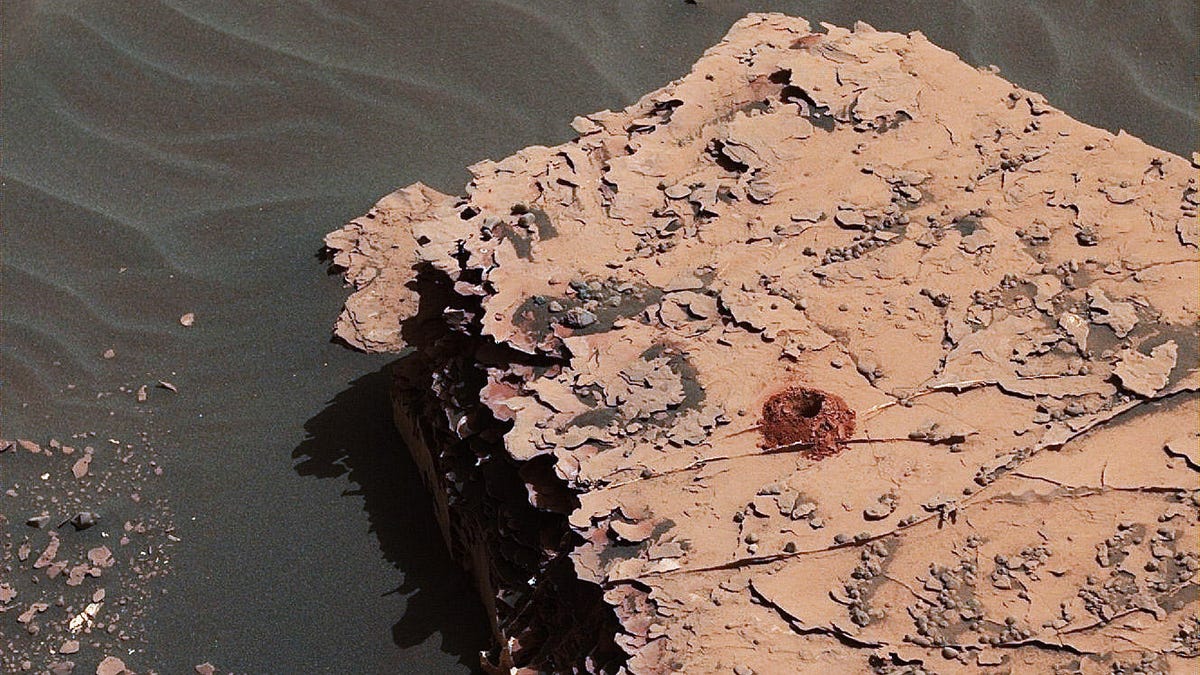NASA Curiosity rover gets its drilling groove back on Mars
Drill, baby, drill.
For the first time in more than a year, NASA's Curiosity rover has pulverized a little bit of Mars.
A rock nicknamed "Duluth" went under Curiosity's drill as a test of a new drilling method designed to overcome mechanical problems with a motor that extends the equipment between two stabilizers.
The motor stopped working in late 2016, so the Curiosity team back on Earth invented a new percussive technique that behaves more like a human would. They finally got to test it over the weekend and successfully drilled about 2 inches (50 millimeters) into the rock.
The new technique is called "Feed Extended Drilling" and uses the force of the rover's robotic arm to push the drill forward.
"The team used tremendous ingenuity to devise a new drilling technique and implement it on another planet," said Curiosity Deputy Project Manager Steve Lee. "Those are two vital inches of innovation from 60 million miles away."
The next challenges will involve fine-tuning the new process and delivering rock powder to the rover's on-board laboratories for analysis. Curiosity's team plans to test a new sample delivery method later this week.


